The strings are the essential central mechanism for creating sound on a guitar, so we cannot ignore it when talking about the guitar. The strings are equally important, whether it is the strings of an acoustic guitar, an electric guitar, or an acoustic-electric guitar. So, learning how to tie guitar strings yourself, whether you’re a beginner or already proficient, is a valuable skill to have.
Although the recommended frequency of changing strings will vary depending on your guitar, the strings’ tuning is vital to maintaining the sound quality that you should do regularly.
Strings for a guitar look like you need a lot of knitting, but it’s that easy. That is why anyone can perform guitar strings to keep your guitar in good condition.
This article will teach you how to make the guitar strings as easy as possible while ensuring outstanding results. We will implement the main content of the article under the following headings:
- General introduction to the guitar
- How to tie guitar strings with specific steps
- Frequently asked questions about the guitar
- Guitar tips and maintenance
- Summary
General Introduction To The Guitar
Kind of guitar strings
Guitar strings have three main categories. They are nylon wire, steel, and copper wire. Each type of string will have different purposes and functions, and every kind of string corresponds to a different sort of guitar.

For example, the steel strings used in electric guitars will differ from those used in acoustic guitars. Note that you should avoid using incorrect strings on any instrument. T thing is essential for optimum sound quality and player comfort.
Kind of guitars
The classical guitar (Acoustic nylon strings)

To play them, you must first plug them in. Double-check the strings to determine if the guitar is classical guitar by selecting that three strings are nylon, while the other three are stringed nylon. If you come across a stringed guitar like this, do not hesitate to choose it because it is a classical guitar.
Nylon string on a classical guitar produces a soothing sound. When compared to other instruments, you can play more complex strings to make a louder sound, but the overall tone is weaker.
For classical music, this is the guitar of choice. Classical guitars are used in several genres, including rock, flamenco, pop, and jazz, in addition to classical music.
Steel Strings guitar

Dreadnought, parlor, and jumbo are the three primary styles for steel-string acoustic guitars. There are other variations and forms, but these three are the most common.
‘Dreadnought’ is the most prominent body. On the other hand, the best body shape is determined by your comfort level because you have so many options.
In contrast to classical nylon guitars, steel-stringed acoustic guitars have a softer sound. They are a popular substitute for folk, blues, pop, rock, bluegrass, and other music genres because of their brighter sound.
Electro-acoustic guitar
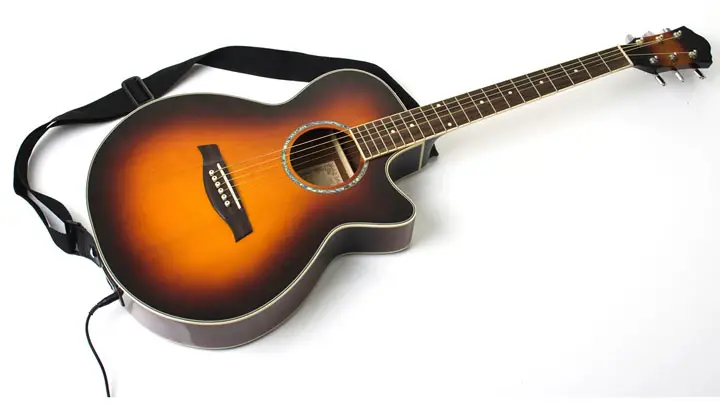
You can plug an electro-acoustic guitar into an amplifier or mixer called ‘Electro-Acoustic’ or ‘acoustic-Electro’ guitar.
It has two additional features that make them look almost identical to a standard acoustic guitar. The electric guitar has a jack to plug in and a control panel with volume, EQ, battery compartment, and sometimes presets.
The most important thing to note about acoustic guitars is that they can be plugged in at any time, but we can also play them like a typical instrument if you don’t have them plugged in.
Both classical and steel string guitars are available in electrically good form. You can insert an electric guitar into the amp, and this helps you use effects and sound settings that you would not usually use for acoustic guitars.
Effects will make the music better or completely change the feel of what you’re playing.
You can find more recommendations for the amp that suits you best here.
Hollowbody guitar
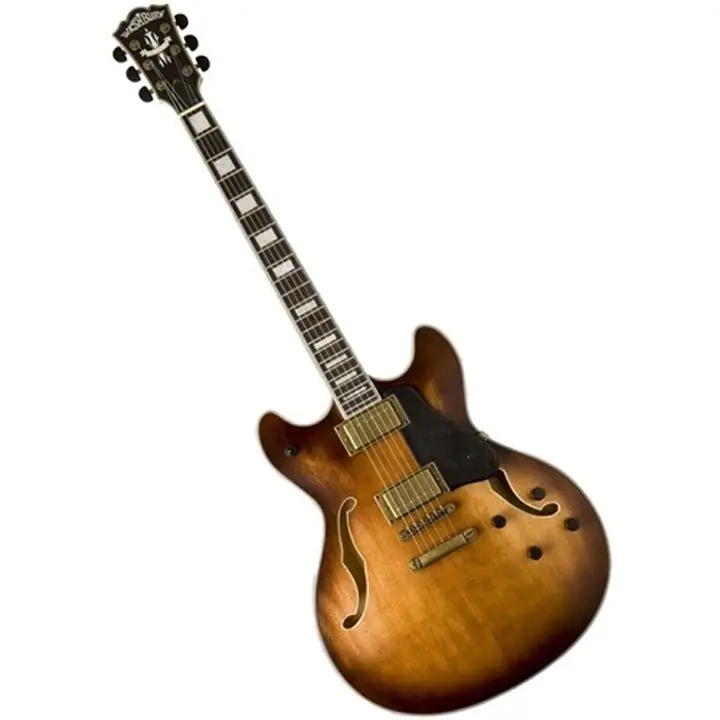
A block of the wood runs along the neck’s lower body, and the channel is semi-hollow. This block does not exist in a hollow-body guitar.
Guitar with a hollow body is prone to vibrations and is not compatible with high-powered amplifiers and recorders. Half-hollow guitars significantly eliminate response problems while maintaining the distinctive sound of hollow guitars.
When you unplug one of these guitars, it will produce a similar sound to the regular guitar. It’s not as loud or transparent as it sounds, but it’s a lot quieter.
When you put a semi-hollow guitar, you get the sound somewhere between the electric guitar and the acoustic guitar. While the sound is closer to electronegativity than sound, it has a sound quality. The melody is soothing and resonant that a powerful electric guitar wouldn’t have. Old blues, swing, original rock ‘n’ roll, rockabilly, and other styles are lines that go well with this guitar.
Electric guitar
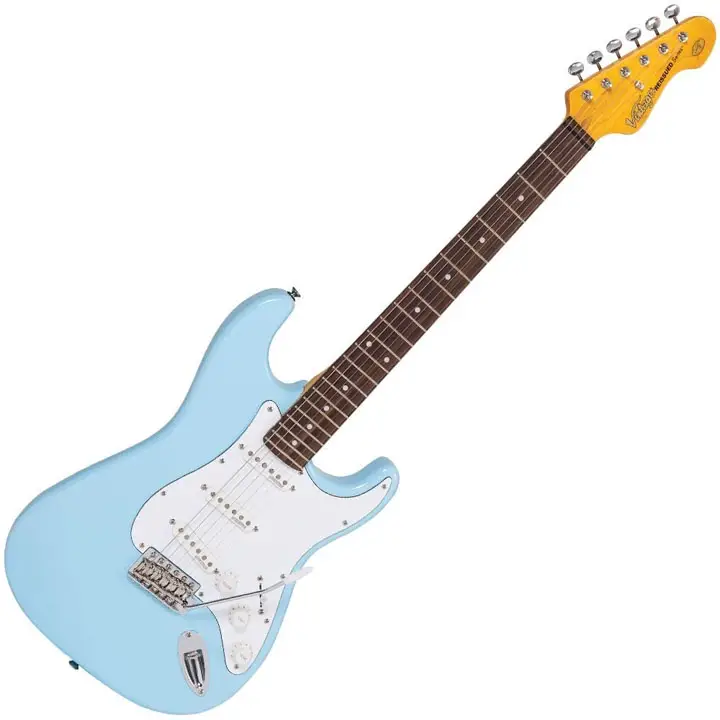
Electric guitars are versatile instruments of many different shapes and sizes, and these examples only touch the surface of what is possible with them.
On electric guitars, the style of the hardware used varies significantly from one instrument to another. It means that each electric guitar has a distinct tone and can perform many tasks.
Electric guitars come in many shapes and sizes, and the sound produced by different types of electric guitars can often vary greatly. You can also purchase electric guitars with a piezo amplifier that simulates the sound of acoustic guitars.
You can use it in almost every musical genre at one point or another, including rock, industrial, blues, punk, etc. It’s hard to think of a rock or heavy metal band without an electric guitar.
Resonator guitar
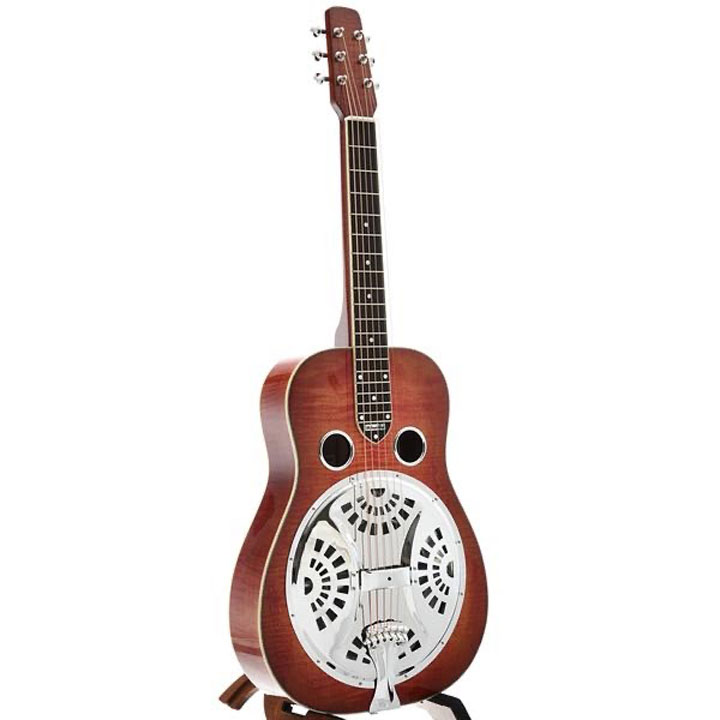
The resonator is a unique instrument that is not always used. These kinds of guitars are essentially metal cones in place of the sound cavity.
This metal cone supports the resonance and projection of every note played on the keyboard. If you’ve never played a tune before, the result is a loud and clear sound that might surprise you. Bluegrass, Western, Hawaiian, blues, and jazz are also known to use resonators.
Different models with different types of cones better suit different musical styles, but you can play them like a regular acoustic guitar.
12 string guitar

12-string guitars are available in both acoustic and electric guitars and are somewhat similar to six-string guitars in terms of playability. The concept behind a 12-string guitar is that instead of six strings, it has 12 strings.
The sound of the 12-string guitar is unmistakable. You will be able to identify one of each song using that until you learn to recognize it.
Extended-range guitar

These extended-range guitars allow guitarists to play everything a standard six-string guitar can play and the lower notes that can go as deep as the bass guitar notes.
Many guitars with extended frequency ranges have tilted frets which are called a particular multi-scale fretboard guitar.
An extension guitar adds more strings to a six-string instrument, allowing you to play everything you can on a six-string device. Guitarists who play heavier genres and technical styles such as progressive metal prefer to use appliances with extended frequency bands.
While we use the lower frequency range on an 8 or 9 string guitar is not suitable for certain types of music, many guitarists use them unusually.
Bass guitar

It is available in the bass, electric, solid body, semi-solid, headless, 4-string, 5-string, 6-string, 8-string, and more bass, just like a guitar.
Bass is a versatile musical instrument that a wide variety of music genres use in performing. If you hear a guitar in tune, you can also hear a bass.
Learning guitar also teaches specific techniques and principles that apply to bass, allowing guitarists to capture bass and start playing simple riffs and bass lines right away.
Lap Steel guitar

Steel lap guitars, pedals steel, and Hawaiian steel guitars are the same catchy instruments as a standard guitar but play very differently.
The artist will play the pianos with the body resting on his lap or a stand through the acoustic sound and strings. A guitarist will learn to play a steel-string guitar using the keys’ experience, but they may need to learn new skills and a new musical approach.
The word “Hawaiian Steel Guitar” will give you a clear understanding of these instruments’ musical styles.
In addition to Hawaiian musicians, they use steel strings and pedal instruments in country music and bluegrass and rock, jazz, blues, and other genres.
The smooth slide between notes gives this instrument a genuinely memorable tune. With a standard guitar and a slide guitar, you can create a similar effect, but it’s not the same.
Learning guitar also teaches specific techniques and principles that apply to bass, allowing guitarists to capture bass and start playing simple riffs and bass lines right away.
How To Tie Guitar Strings With Specific Steps
Basic steps to tie guitar strings
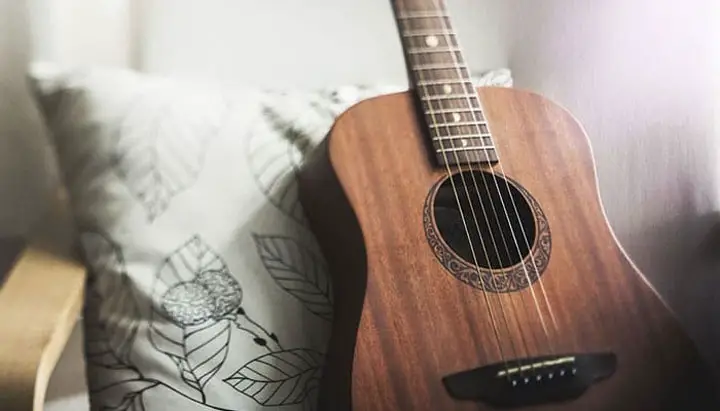
Step 1. Insert new strings
Before moving the strings, we recommend placing a Post-it note on top of the guitar behind the bridge to protect the head from damage when changing the strings. One end of the nylon rope is usually loosely woven for better stability. It is the end of the wire that connects to the rail. Insert the end of the wire into the hole in front of the bridge.
Allow three-inch-long ropes to protrude behind the bridge.
Step 2.Looping the strings.
Wrap the end of the rope under the rope and pull it back (on the other side of the bridge). The chain that forms a loop is the result of this.
Step 3.Twist the button.
To wrap the coil around itself, wrap the end of the wire below the first loop.
Step 4. Repeat action
Wrap the end of the string around itself again, using the same steps as before. This status will result in the secondary winding of the two required.
Step 5. Pull the strings
Tighten the loop. The end of the rope will now rest against the back of the bridge.
Step 6. Keep the end of the strings
After you pull the rope close enough, leave enough cords at the bridge to go through the next hole. To be kept safe and tidy, the following string will wind through the end of the current.
Step 7. Pass the strings
Insert the other end of the string into the tuning hole, the end of the string facing the neck.
Step 8. Pass and loop the strings
Flip the top end of the chain up and behind the regulator, where it will be below the big chain in the next stage.
Step 9. Hold the strings
As you pull the rope closer to the roller with your left hand, hold some friction on the cord with your right fist upright (for proper deflection). To keep the strings in the correct position, you should put the best part at the top of the adjusting hole.
Step 10.Tighten the strings
Tighten the wire by wrapping it around the end of the wire and facing out the rollers. Make sure that the thread curls neatly and does not rub the sides of the staple. Adjust pitch. Use up to 4-6 wraps for best tuning, then cut off the ends of excess wires.
Step 11. Pull the strings
Put string A (5th) in its correct position.
Grasp the end of the first string below the current string to keep it tied to the back of the bridge as you connect the following string. To ensure that each chain is neatly linked to the bridge, repeat this process for each string you modify.
Step 12. Snip the strings
Snip the excess from the 6th wire (E), ensuring that the rest of the wire is just away from the next hole. Using the same approach as the 6th and 5th series, add the 4th string (D).
After adjusting the string, use your thumb and index finger to spread each string throughout its length gently. Repeat the tension two to three times after adjusting the string to the pitch.
Detail steps to tie guitar strings
Metal wound strings

Step 1: Place the guitar on the knee or the table and move the guitar to the left.
Pass the rope through the hole on the bridge from left to right.
Step 2: Hold the string on the right-hand side and move up and down the back of the main string.
Step 3: Put the end of the wire back, so it rests against the rim.
Being viewed from the right down the instrument’s length, and the strings can be stuck, hold the strings and avoid slipping.
Head securing

Step 1: Place the guitar on your lap or table.
Thread the end of the string through the hole in the body.
Step 2: Put the cord back on your right-hand side and leave it there.
Step 3: Cross the rope from your right to your left.
Step 4: Use your left hand to move the loose ends below the wire’s central part.
Step 5: With your right fist, grab the end as it is loose. Half the Hitch is the node you are making with the rope.
Step 6: Grasp the end of the rope and pull it out tightly with your right hand.
Step 7: With the left hand, deftly begin to rotate the latch clockwise while still holding it tightly with your right hand.
Stage 8: Continue to rotate the screw clockwise, and the Half Hitch button may start to move as the barrel rotates.
By pushing your right hand forward and backward following the main thread, you will allow the knot to pass. The last button will coincide with the hole in the barrel.
Step 9: Start rotating the wire adjuster pin until it gets through the hole and enters the correct position.
The knot will not move in this position, and you can let go of your right hand.
You’ll also use the same system to fit the remaining metal coils and tune your instrument.
Cut off all loose ends.
Frequently Asked Questions About The Guitar
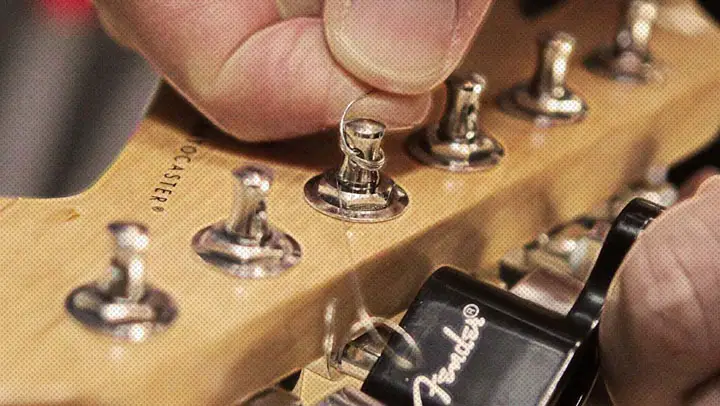
When should I change my guitar strings?
Beginners don’t want to spend money on strings that are still active. When the D wire causes you hand pain at the 2nd key to the point where the metal coil will cut through, leaving the wire unprotected, and in many days it won’t break. It’s time to change the wire.
The frequency of string changes is somewhat subjective, but it depends on the sound you want to make and how often you play the guitar. Consider wiping your strings and using a safety string cleaner if you’re going to extend the strings’ lives until they need to be replaced.
A more experienced guitarist will notice that the bass strings become “crept” with no higher harmonics and lack of volume and durability. This problem occurs mainly for two reasons:
- Corrosion
- Residues accumulate in the coils, including natural lubricants from the fingertips, hand lotions, skin cells, and other irritants.
A gentle studio guitar playing with one can last a few sessions before it needs to be restored. Also, even after a few plays, the moisture and oil from your hands can affect the sound’s feel and quality afterward. This is especially important for guitarist scars as they need to make sure that each performer’s feeling and sound are as coherent as possible. It was evident to an artist that they will recognize when a sound has lost its power.
How long does the string’s usability last?
This situation depends on the user. Non-standard sounds may not disturb a beginner, and your strings will last for a year. The strings on an expert practice guitar can be changed more often than once a month because they require very high acoustical precision.
Do the strings at the top last forever?
Peak tones are proven to last longer. The peak lasts 9-12 weeks, while the bass lasts only 3-4 weeks. Although the top strings always appear to be in good condition, acting on the keys puts stress on the strings, causing them to stretch unevenly, resulting in poor intonation.
When is the best time to replace the strings to ensure my safe use?
The top strings are the ones that take the most time to solve the problem. Each kind of string requires a different length of time for you to fix it. As a result, the ropes stay bright and function well for long periods.
The key to stabilizing the strings is not magic, nor is it overly straining or pulling strings off the instrument’s front. Adjust the guitar before breakfast, after breakfast, home from work, after eating, and before going to bed. The strings will perform better if they are in the correct tension.
What type of string is the best?
It is only a personal choice. There is no best string globally, neither the most expensive guitar nor the one made from gold. The best lines should come with the best guitar that works best for you.
This issue largely depends on how and how much you use it. Here are some of the most common causes of wire breakage:
- Wearing caused by mechanical force
- Overtighten the knot at the bridge end
It’s not just bad luck that having some problem with your strings. It’s a sign that something is wrong or worn so you can know when you should change it.
Guitar Tips And Maintenance
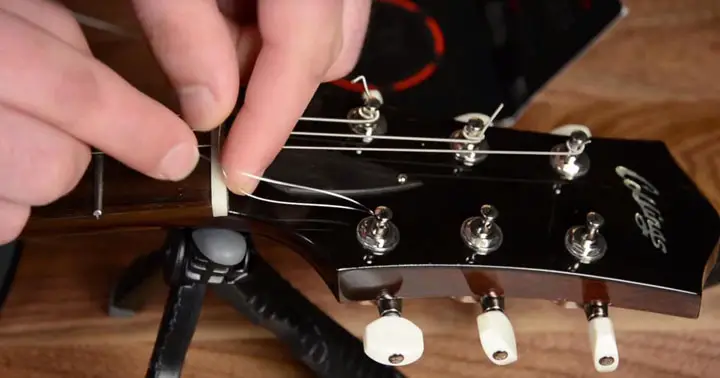
Tips to remove the latch
If your latch is difficult to remove, you can pull it out with pliers, but use a cloth to avoid damaging the pin.
If you are still having trouble removing the battery latch, it is still possible to use small spoons. Place the spoon’s tip under the latch and use a small amount of force to lift the latch. If you are extra careful, you can put a layer of cloth between the ball pin and the spoon’s tip to prevent damage to the latch. Another method to remove the latch is to use old laces. Wrap the shoelaces around the latch and stretch with both ends. With a bit of patience, you will be able to remove the latch without damage.
Tips to remember the guitar’s key
From the 6th string to the 1st string, the guitar’s keys are E-A-D-G-B-E. As a result, you can tune your guitar in this order. You should ensure that all of the instrument’s assigned keys are in sync with other devices.
You should use an acronym to remember the proper placement of the guitar keys.
The acronym “Every-American-Deserves-God’s-Blessing-Everyday,” for example, will be handy. When tuning the guitar, be careful not to be confused between the first and sixth strings. This fact is because you tune both of your guitar strings to the key of E.
Properly tuned guitar strings
To adjust the head of the string is flat, simply rewind the string. Reduce the tension below pitch and then back up if the note is too sharp. It improves the position on the bridge and in the nut. Also, double-check that you have enough windings around the top of the guitar. Not so much that you get tangled up with tuning the strings, but four or five times around is enough to keep the strings from slipping.
Extra care with the high B and E ends
Lastly, always be careful not to prick your fingers yourself with the high B or E tip. It feels painful. This fact is also too common for all guitarists.
Change the string size or shape of the guitar string
You can choose to change the band to change your look in addition to the usual wear and tear.
The tension, tone, and feel of each set are different, so several factors are considered when choosing a new location. The gauge changes affect the pressure, but they also require a new setup to accommodate the new wire sizes. Frequency content and durability are subject to change as materials (nickel, stainless steel, nylon, etc.) are changed.
Have you not decided to buy yet? Simply choose one that meets the requirements of your favorite genre or personal style of play. Learn more about electric guitar string selection here.
Clean the guitar and fretboard in advance
Before modifying your strings, make sure your guitar and fretboard are clean.
The majority of commercially available string cleaners are safe for your guitar’s wood. Some wood polishes, on the other hand, may hurt your strings. If you want to clean your guitar correctly and use unique wood polishes or oils on the fretboard, do so before changing the guitar strings. If any of those goods harm the strings’ integrity, it’s best to clean your guitar first with the old strings still on.
Clean the old strings
The most common reason for wire replacement is that they have become dirty, lose tone, and possibly can’t adjust it anymore. Sweat, oil, and dead skin cells stick to the keyboard when your fingers, palms, and arms touch the keyboard. All of that gets caught between the coils, altering the sound and feel of the instrument.
It will build up, shorten the retention time and eventually degrade the sound quality if it is not cleaned after playing.
Guitar string cleaning comes in handy if you want to keep the tones clear without replacing them.
Use handy strings-changing tools.
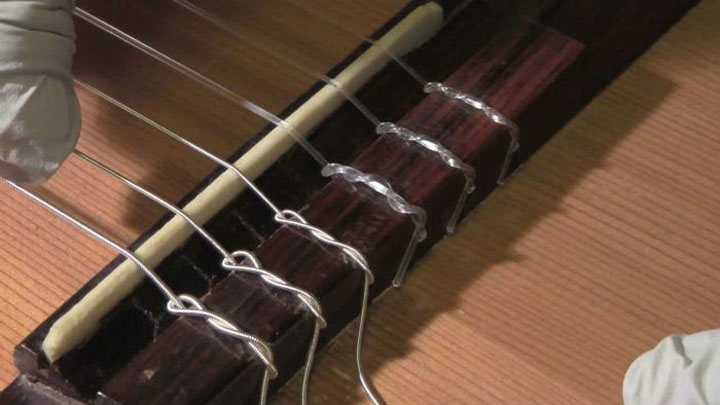
Wirecutter tools (or cutting machine)
You must have cut the strings with a standard pair of pliers for a long time until you discovered that there is a winding set with a built-in cutter. However, any string breaker will undoubtedly suffice for your string cutting needs. One benefit of using pliers is that you can bend the strings’ ends, so you don’t get hit by the strings.!
Winding tools
The winding tool is a handy tool to have when changing ropes, significantly if you change them all at once. They save a lot of time and effort, and I think you shouldn’t be without them. Electric winding machines are available, but they waste money and are more likely to pick up dust than help with wire changes.
Old clothes
Once you’ve removed all the strings from your guitar, this is the safest time to clean it, so grab a piece of cloth (an old shirt) to polish and hold on to it as you change the cord. It is also an excellent place for you to put the body of your guitar. However, do not use a carpet.
Stands
If you are going to change the strings while the guitar is lying flat, one of these stands will make this a lot simpler. Professional guitar technicians often use a wooden neck stand with foam on top, but these tiny folding cushions are great for casual people who don’t do it daily.
Carefully store
The air we breathe is full of bad things that will quickly dull and rust your guitar strings. It’s a tricky one because putting your guitar away and out of sight makes it difficult to practice improving your skills regularly.
Keeping your guitar in a nice hard case, on the other hand, is still a good thing. Your guitar strings will be more resistant to the elements and last longer.
Because the guitar is made of wood and is susceptible to temperature changes, you should store it somewhere safe and secure.
But if you always want to place it securely yet beautiful as a beautiful addition to your space, then you should try using a guitar wall hanger to keep your guitar in place. Wondering which is the best wall hanger for your guitar to choose? This review is probably great for you.
We found a video of exercises you should practice regularly to improve your guitar playing that we think you’ll want to check out now:
Summary
The topic of guitar strings is never enough because it encompasses a wide range of variables such as the core’s shape, whether it is coated or not, the string’s material, etc. Therefore our advice for tying your strings is just to try everything and see what happens. You never know what you can accomplish if you are afraid to try new or difficult things.
Hopefully, this article on how to tie guitar strings has provided enough information to help you change your favorite guitar strings in the future. If you haven’t found your ideal guitar yet, you can check out this review to help you find one.
Have a good time and continue strumming the guitar!
Read Also:
19 Best Solid Body Electric Ukulele Reviews-Which One Do You Choose?
